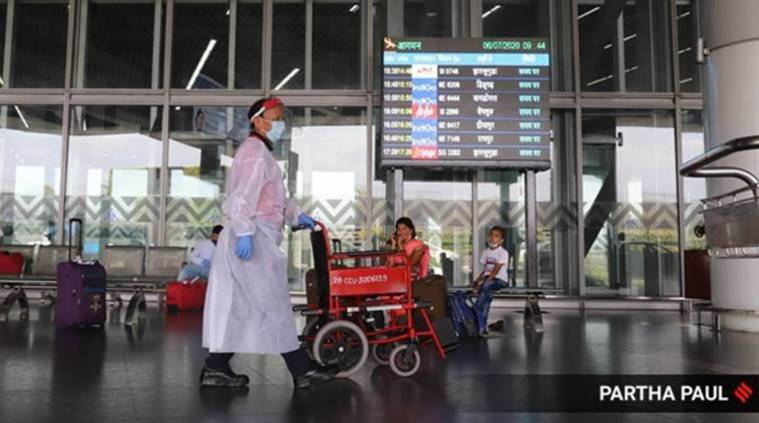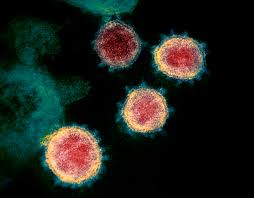Fast-spreading UK-type variants of SARS-CoV-2 could also develop independently in India. Ignorance cannot be bliss. One basic element of disease surveillance is adequate coverage and density to catch events before they spread widely. Much more genome sequencing is critical.
The year 2020 will be remembered for the emergence of a new virus — the SARS coronavirus 2 (SARS-CoV-2) and the Covid-19 pandemic it caused. With a few more days to go, 2020 is projected to close out with about 84 million confirmed Covid-19 cases and over 1.8 million deaths.
Despite this gloom, this has also been a year of hope, with the development, testing and approval of vaccines at remarkable speed. For the first time ever, a pandemic of human disease would be controlled by vaccines in real time.

Nobel Laureate Joshua Lederberg, one of modern biology’s most influential thinkers, once said, “The single biggest threat to man’s continued dominance on the planet is the virus.” Two recent developments remind us why viruses can be such formidable adversaries.
With the discovery of 58 people testing positive for the new coronavirus in Antarctica, the pandemic has reached every continent. And a mutant virus has emerged in the United Kingdom, which threatens to shut down the world yet again — a world just beginning to recover from lockdowns and movement restrictions.
The mutation of viruses
The genetic material or genome of SARS-CoV-2 is a ribonucleic acid (RNA) made up of over 30,000 units (called nucleotides). Among the families of RNA viruses, the coronaviruses have the largest genome. Most other RNA viruses have on average about 10,000 nucleotides. When genomes replicate — any genomes, whether DNA or RNA, from the smallest viruses to humans — there are random errors (or mutations). While higher organisms have the machinery to correct these errors, viruses and especially the RNA ones, don’t.
Most mutations are deleterious, and those viruses are never seen. Only the mutations that offer some selective advantage result in the evolution of new viral variants.
Evolution also requires selection pressure. For a virus, this could be its ability to infect better and multiply to higher numbers or evade host immunity. The low probability of these events is compensated by the high rates of virus multiplication. For example, each coronavirus-infected cell produces about 1,000 new virus particles in under 12 hours.
The mutant in the UK
A distinct phylogenetic cluster or lineage (named B.1.1.7) of SARS-CoV-2 was recently discovered in the UK. The two earliest viruses of this lineage were collected on September 20 and 21 from Kent and Greater London respectively. By December 15, this lineage contained 1,623 viruses — 555 from Kent, 519 from Greater London, 545 in other regions of the UK including Scotland and Wales, and four from Australia, Denmark, Italy, and Netherlands.

In another ten days — on December 25 — the numbers of these variant viruses has more than doubled to 3,575; mostly from the UK, but now also from France, Ireland, Israel, Hong Kong and Singapore.
What the mutation does
Compared to the original SARS-CoV-2 strains, viruses of this lineage have accumulated 23 mutations across 5 genes. Of these, there are 17 non-synonymous and six synonymous mutations; the former also change an amino acid at that site in the protein. Importantly, of the 17 non-synonymous mutations, eight are in the spike protein — the protein that allows the virus to attach to and enter cells.
The expert
Dr SHAHID JAMEEL is one of India’s best-known virologists. Currently the Director of theTrivedi School of Biosciences at Ashoka University, he previously worked for Delhi-based International Centre for Genetic Engineering and Biotechnology, and then served as Chief Executive of the Wellcome Trust/DBT Alliance which funds health research.
The N501Y mutation in one of the key contact residues in the receptor binding domain (RBD) of the spike protein increases its affinity for the ACE2 receptor. The P681H mutation in the cleavage site between the S1 and S2 domains of the spike protein promotes entry into susceptible cells, and increases transmission in animal models of infection.
The N501Y change is also associated with increased infectivity and virulence in animal models. Both these mutations were earlier observed independently, but have come together in the UK variant viruses. The result is a virus that spreads faster than before.
The cause for worry…
There is widespread concern that these mutations may prevent currently used tests from detecting the virus, make it more lethal, or allow it to evade vaccines under development. There is no evidence so far for any of these. After all, these variants were found in people who were identified to be positive with currently available RT-PCR tests.
However, even though there is no evidence for more severe disease, there is clear evidence that this variant is more contagious. Those infected produce more virus in their nose and throat, and that leads to more virus shedding and more person-to-person transmission.
While these variants appear not to be more lethal, with more infected people there would be higher numbers (not percentages) of severe infections and deaths. This should be cause for worry.
…And reason not to
Even though there are multiple mutations in the spike protein, most experts believe that vaccines currently in development would also work on the variant viruses. Vineet Menachery, an assistant professor of microbiology and immunology at the University of Texas Medical Branch in Galveston, US, has provided the first evidence for this.
His laboratory compared the efficacy of serum samples from recovered Covid-19 patients to neutralise viruses with or without the N501Y mutation. They found no difference. Though only shared on Twitter on December 23 and still not part of a publication, these results are encouraging and reassuring.
Flights off, not mutation
India has stopped all flights from the UK and increased surveillance at airports to stop the import of the highly transmissible variants. While seemingly a reasonable strategy, such variants could easily develop within the country too. After all, India has over 10 million confirmed infections and it is estimated that 150 to 200 million people are already infected.
A fast spreader variant called 501.V2 emerged independently in South Africa and shares the N501Y mutation with the UK variants. Though the spike N501Y variant has not yet been found in India, viruses with the P681H mutation started emerging in July and presently 14% of SARS-CoV-2 circulating in India carries this mutation.
These viruses are mainly from Maharashtra, with some from West Bengal as well. It would take just one more mutation for us to get where the UK is today. And that should also worry us in India.
Quick reaction is key
To catch the emergence of new viral variants before they spread widely in the population, the World Health Organization (WHO) recommends determining the virus genomic sequence from at least one out of every 300 confirmed cases (or 0.33%). The UK has sequenced 135,572 or 6.2% viral variants from its 2.19 million cases, while South Africa and the US have reported genome sequences from 0.3% of confirmed cases.
However, India has so far sequenced only 4,976 or 0.05% viruses from its over 10 million cases. At this rate, we will remain oblivious to the emergence of new variants till it is already too late. One basic element of disease surveillance is adequate coverage and density to catch events before they spread widely.
Conducive Indian conditions
Another reason to worry is that the conditions hypothesised to give rise to the UK variant are present in India as well. Immunodeficient or immunosuppressed patients, who become chronically infected with SARS-CoV-2, remain positive for viral RNA for 2-4 months instead of the usual 2-3 weeks. These patients are often treated with convalescent plasma (sometimes more than once) and usually also with the drug remdesivir.
Virus genome sequencing from such patients has revealed unusually large numbers of nucleotide changes. Intra-patient virus genetic diversity is also known to increase following plasma therapy. Poor nutritional status is a known cause for weak immune systems and physicians in India have reported chronic infection in a subset of patients.
Several unknowns remain
Plasma therapy and remdesivir have also been used widely to treat Covid-19 patients in India. Further, plasma has been administered in India without first testing for the levels of neutralising antibodies. All these create opportunities for UK-type variants to emerge in India as well. But we have not sequenced enough to know if that has happened.
Even at low coverage, the sequences from India are skewed for urban locations, especially the metros where sequencing laboratories are located. This needs broader coverage to include all parts of the country. The Indian Council of Medical Research can facilitate this process by providing access to samples from Covid-19 patients to research laboratories that have the capacity for genomic sequencing and data analysis. Real-time surveillance will provide data that is both dense and granular for setting policy based on evidence.
Going forward with ‘SMS’
When vaccines are deployed more widely, there would be further selection pressures on the virus to change. Vaccine-escape mutants are well known for other viruses and will emerge for SARS-CoV2 as well. Only proper genetic surveillance will catch any vaccine failure well in time.
As we step into 2021, the message to policymakers and the public is clear. Those who oversee public health must continuously seek fresh evidence to make policies at the population level. At the individual level, each one of us must work towards reducing virus transmission — less transmission means less opportunity for the virus to change. And SMS is the only tool available to us at this time — social distancing, masks and sanitisation.



































